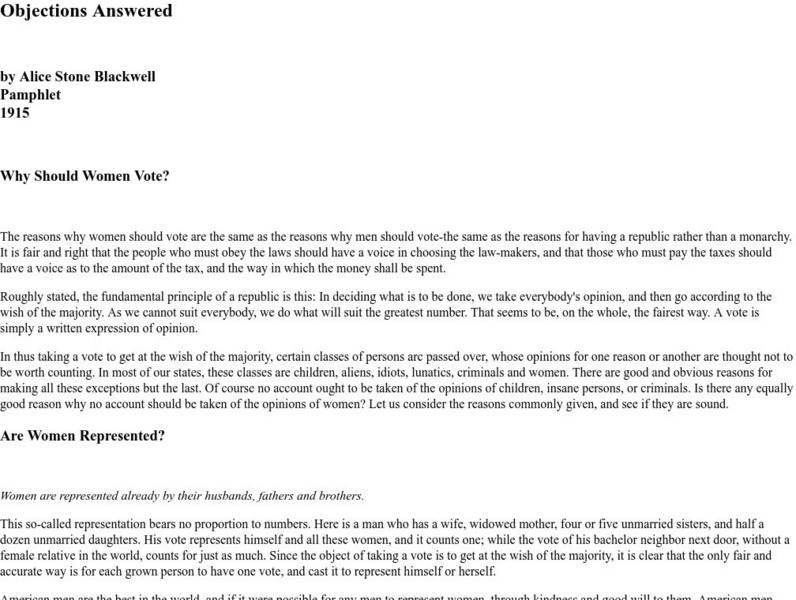C-SPAN
Jane Addams and John Dewey
Imagine living where there was eight inches of garbage on the street! These were the situations the Progressive movement sought to reform. Using video clips about John Dewey and Jane Addams, learners consider the philosophies and impact...
Teacher Created Resources
Angelina and Sarah Grimke: Sisters of Social Reform
Who are the Grimke sisters? Scholars find out with a worksheet that details the struggles and triumphs of the lives of Angelina and Sarah Grimke. After reading an informational text, class members have the opportunity to show what they...
US National Archives
Nara: Teaching With Documents: Petition of Amelia Bloomer Regarding Suffrage
Amelia Bloomer was a prominent advocate of women's rights in the 19th century. She invented bloomers to replace the skirt hoop, in an effort to free women from much of their cumbersome apparel. She later used her newspaper, The Lily, to...
PBS
Pbs: Jane Addams and Hull House
An interesting interview with Robyn Muncy, a Professor of History, about Addams and the philosophy of the women who started the Hull House.
Other
D Archives: Alice Stone Blackwell, Objections Answered
Read this 1915 essay by Alice Stone Blackwell, who outlines the basic reasons women should be granted equal voting rights in the U.S.
Gilder Lehrman Institute of American History
Gilder Lehrman Institute: History by Era: Slavery and Anti Slavery
[Free Registration/Login Required] An excellent essay explaining the roots of the anit-slavery movement in the United States in the early 1830s and its evolution over the next twenty-five years. Read about the abolitionists, both white...
National Women’s History Museum
National Women's History Museum: Seneca Falls Convention
Students will examine primary sources about the Seneca Falls Convention in 1848 to understand why a women's rights movement was necessary to gain greater rights for women.







